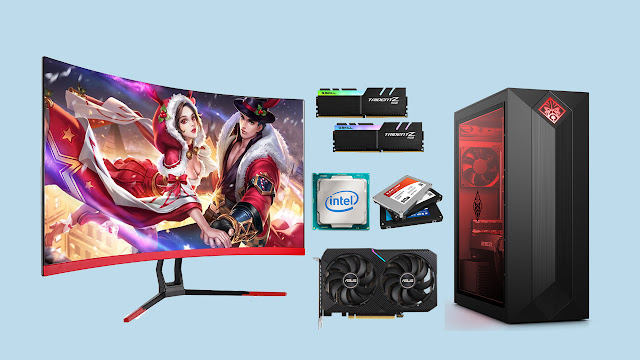Building a PC for 3D Modelling: What You Need to Know
As 3D modelling becomes more and more prevalent in various industries the demand for powerful computer systems has increased dramatically. A high-quality PC is essential for anyone who wants to create stunning 3D models and animations with ease. In this guide we will guide you through the process of building a PC that is optimised for 3D modelling and rendering.

However it's important to choose the right components to ensure a smooth 3D modeling experience. That's why we recommend checking out PC-Builder, a website that can help you choose the best parts for your build. With PC-Builder you can easily select the components you need, compare prices and see how they perform in 3D modeling tasks.
What is 3D modeling?
3D modeling is the process of creating a 3-dimensional digital representation of an object or scene. This can include anything from simple geometric shapes to complex detailed models of people, animals and buildings. It is used in a variety of industries including architecture product design animation and video games. It involves using specialized software to create a virtual model of an object or scene which can then be manipulated and viewed from any angle. The process typically starts with creating basic shapes and then adding details and texture to create a realistic representation. 3D modeling allows designers and artists to quickly prototype and visualize their ideas in a virtual environment making it easier to make changes and improve upon the design.
Requirements for a 3D Modeling PC
Before we dive into the specific components that you will need to build a PC for 3D modeling it's important to understand what requirements are essential for a computer system that is designed for 3D modeling.
Processor (CPU)
CPU is the most important component of 3D modeling PC. It is responsible for performing complex mathematical calculations and executing instructions from software applications. Powerful CPU is essential for it because it ensures that your computer can handle the demanding computations required for creating and rendering 3D models.
Graphics Card (GPU)
A graphics card (GPU) is also an important component of a 3D modeling PC. It is responsible for rendering the 3D models and animations that you create. Powerful GPU is essential because it ensures that your computer can perform the demanding graphical calculations required for creating high-quality 3D models.
RAM (Memory)
RAM (Random Access Memory) is a type of computer memory that is used to store data that is currently being used by the CPU. The more RAM your computer has the more data it can store which means that it can perform more complex computations and handle larger 3D models.
Hard Drive (Storage)
Hard drive (or solid-state drive) is used to store your operating system applications and 3D models. A large hard drive is essential for 3D modelling because it ensures that you have enough space to store all of your work.
Cooler
When contemplating the construction of a 3D modeling personal computer, it is imperative to take into account a fundamental component that ought not to be overlooked - the cooler. The cooler serves the pivotal role of dissipating the heat that is generated by both the central processing unit (CPU) and graphics processing unit (GPU) of your device, thereby facilitating optimal stability and performance. It is noteworthy that there are numerous types of coolers at one's disposal, including air coolers and liquid coolers. The former category, air coolers, is less expensive and less complex to install; however, it does not perform as effectively in cooling one's device as liquid coolers do. By contrast, liquid coolers are more expensive and intricate to install, yet they offer superior cooling performance that promotes the maintenance of optimal temperatures and optimal functionality of one's computer.
Motherboard
The motherboard is the backbone of your PC and connects all of the components together. When choosing a motherboard for a 3D modeling PC, it is important to consider the CPU socket type, RAM compatibility and the number of GPU slots available. Additionally it's a good idea to choose a motherboard that has good overclocking capabilities in case you want to increase the performance of your CPU or GPU in the future.
Power Supply Unit (PSU)
The power supply unit (PSU) is responsible for supplying power to your computer components. It's important to choose a high-quality PSU that provides enough power for your system and has good efficiency ratings. A prudent approach would be to select a PSU whose power rating slightly surpasses the power consumption of your system thereby ensuring an adequate safety margin.
Case
The case is the enclosure that holds all of the components of your computer. When choosing case it's important to consider factors such as size cooling options and accessibility to components inside.
Conclusion
Building a PC for 3D modeling can be a complex and challenging task but with right components you can create a powerful system that will help you create stunning 3D models and animations with ease. By choosing a powerful CPU GPU RAM hard drive cooler motherboard and power supply unit you can build a system that can handle even most demanding 3D modeling tasks.
